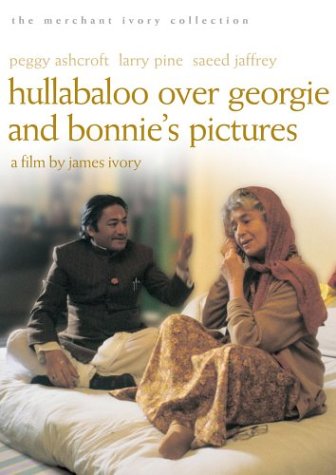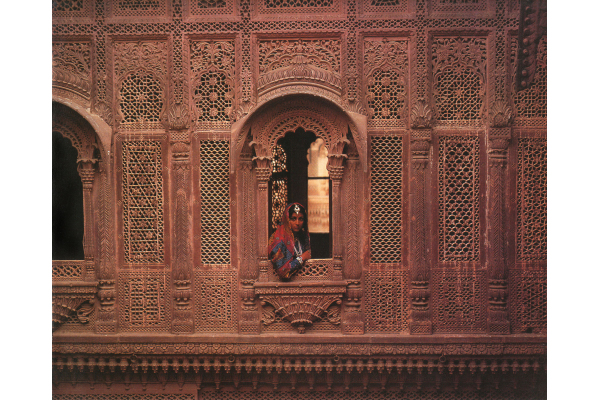
Hullabaloo Over Georgie and Bonnie's Pictures
1978/India, 85 minutes
- Costumes: Purnima Agawal
- Music: Vic Flick
- Costumes: Jenny Beavan
- Sets: Bansi Chandragupta
- Director: James Ivory
- Producer: Ismail Merchant
- Executive Producer: Melvyn Bragg
- Screen Writer: Ruth Prawer Jhabvala
- Editor: Humphrey Dixon
- Photographer: Walter Lassally
- More
n 1977 the London Weekend Television arts programs called "The South Bank Show" made a proposal through its presenter Melvyn Bragg to Merchant Ivory to make a television film for them. The subject was open, so long as it had an arts connection. Ivory was receptive, and the subject of collecting Indian miniature paintings, an interest of his since The Sword and the Flute, was eventually decided on. The film that resulted, Hullabaloo Over Georgie and Bonnie's Pictures, cost 250,000 pounds to make, with finance coming chiefly from London Weekend Television. The script, written by Jhabvala, working closely with Ivory, proved intractable at many points, and Jhabvala would have withdrawn but for Merchant's insistence that they see it through. Difficulties were increased by the fact that the screenplay was still being written when shooting began in India. "We just kept shooting from these random bits of paper," Ivory explains, "and hoped for the best. We were still trying to figure out the denouement on location at the Umaid Bhawan Palace in Jodhpur." Its improvisatory nature, however, does not show whatever in the finished work, which appeared first on British television and then as a feature film in London that received enthusiastic reviews. The complicated story concerns a legendary collection of Indian miniature paintings locked up in the storeroom of an Indian palace far away in the wilds of the Rajasthani desert. No one has seen these pictures for years, but such is the collection's fame that it has attracted a group of art lovers and fortune seekers who converge simultaneously on the palace. They begin to plot how to make off with it. Lady Gee (played by Peggy Ashcroft) is the determined, high-powered and unprincipled curator of a London museum. She is sure that the pictures belong there, for their own good. A young and inscrutable American collector (Larry Pine) is equally determined to get his hands on them. The Maharaja's restless sister Bonnie (Aparna Sen) wants to whisk them off to Sotheby's and use the money, which she would share with her brother, for a more exciting life somewhere (anywhere) else. The Maharaja (Victor Banerjee) is indifferent -- it seems. He appears only to be interested in the pretty English girl (Jane Booker), that Lady Gee has brought along with her as a companion. In this film of Merchant Ivory about the ownership of art, there is plenty of it on screen, and its ultimate disposition appeals to audiences. The subtleties of the story have been called "Jamesian" by critics: the supposedly innocent or unworldly characters turn out to be wily as foxes, while the greedy and high-handed ones turn out in the end to be unexpectedly generous and philosophical minded.
Cast
- Peggy AshcroftLady Gwyneth McLaren Pugh
- Larry PineClark Haven
- Saeed JaffreyShri Narain
- Victor BanerjeeThe Maharaja of Tasveer
- Aparna SenMaharaja of Timarpur
- Jane BookerLynn/Joyful Girl
- Jenny BeavanGoverness
- Aladdin LangaServant
Crew
- Costumes: Purnima Agawal
- Music: Vic Flick
- Costumes: Jenny Beavan
- Sets: Bansi Chandragupta
- Director: James Ivory
- Producer: Ismail Merchant
- Executive Producer: Melvyn Bragg
- Screen Writer: Ruth Prawer Jhabvala
- Editor: Humphrey Dixon
- Photographer: Walter Lassally















